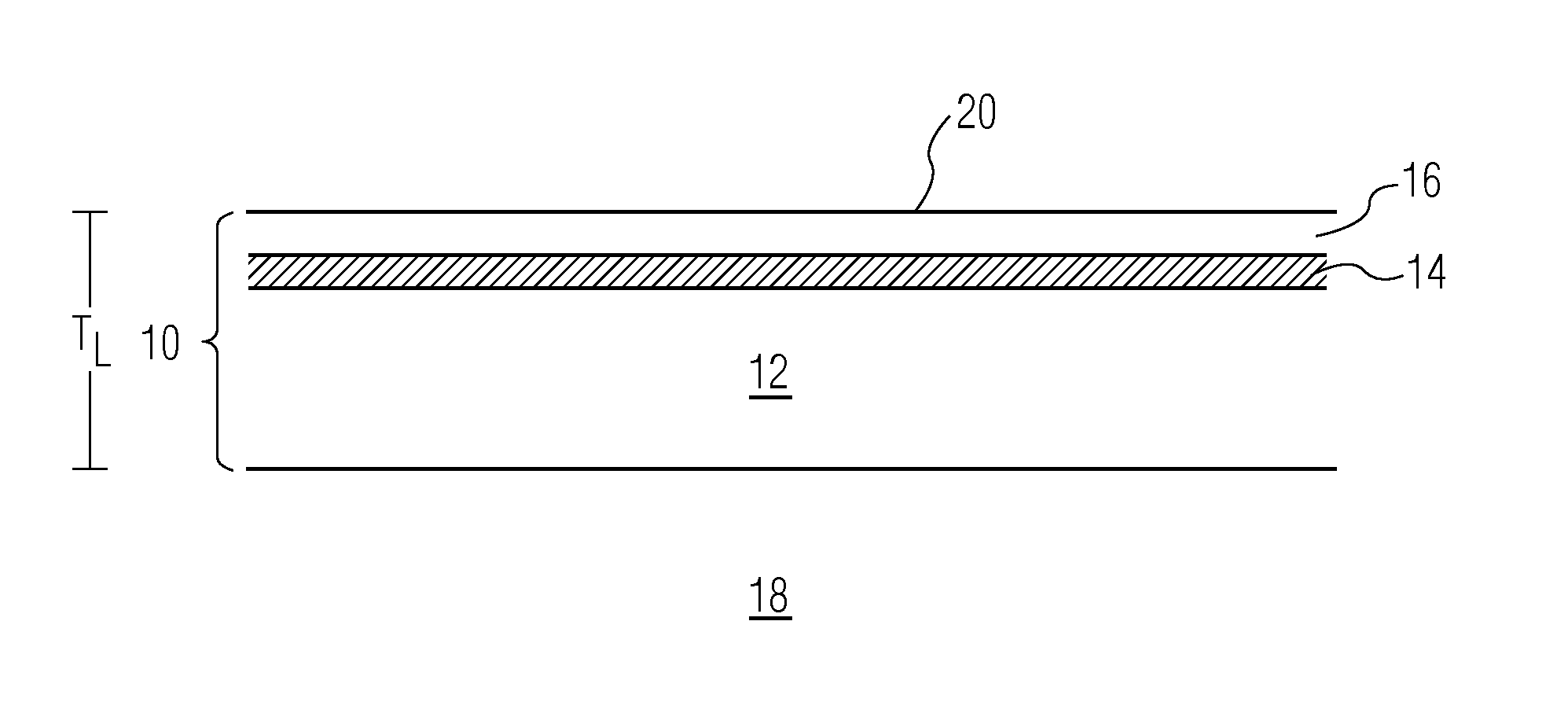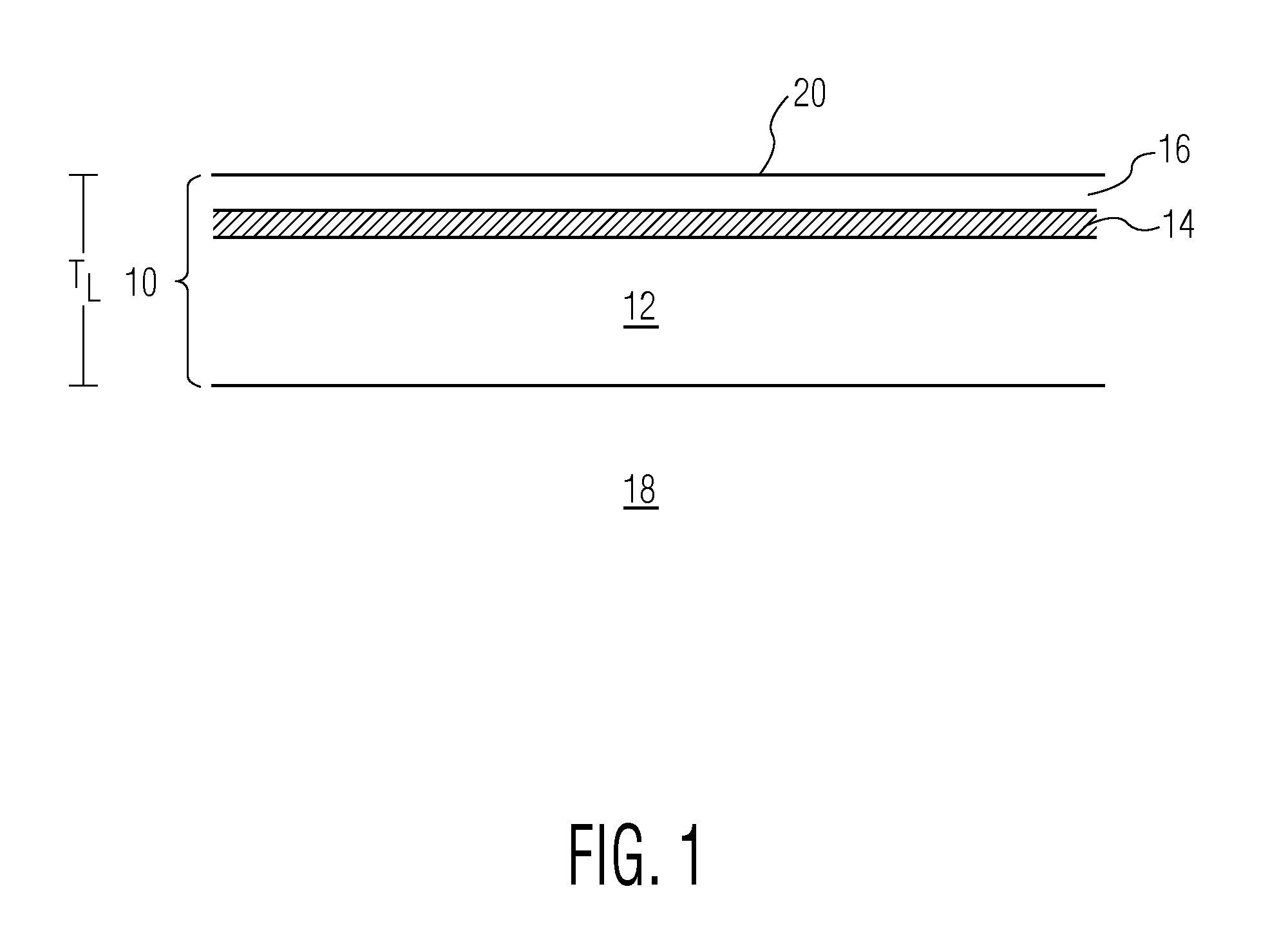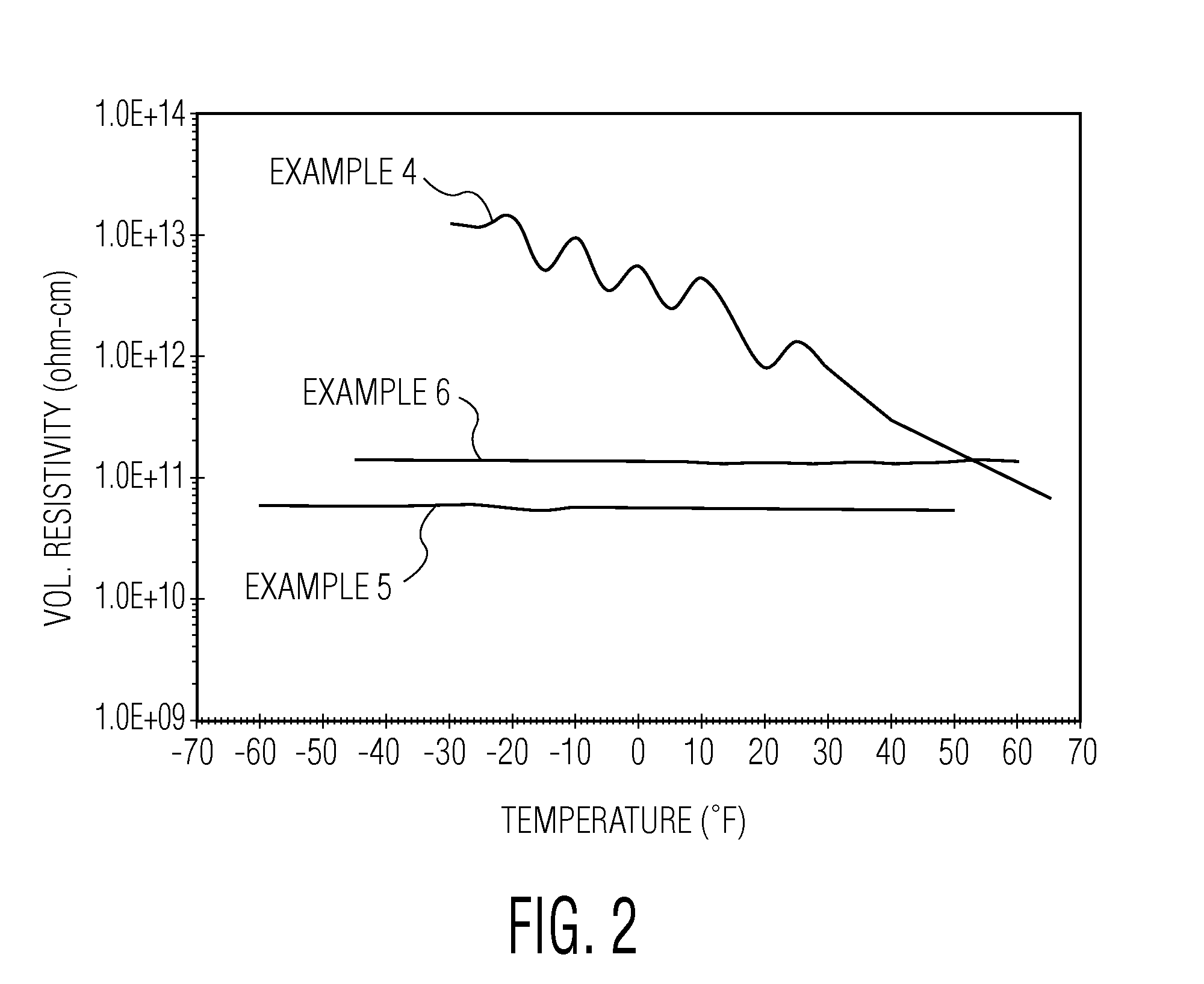Transparent polyurethane protective coating, film and laminate compositions with enhanced electrostatic dissipation capability, and methods for making same
a technology of transparent polyurethane and composition, applied in the direction of paper/cardboard containers, instruments, conductive layers on insulating supports, etc., can solve the problems of transient charge transfer to the surface via triboelectric, several serious problems affecting aircraft performance, and safety, and achieve the effect of enhancing the service life and safety of transparent polyurethane compositions
- Summary
- Abstract
- Description
- Claims
- Application Information
AI Technical Summary
Benefits of technology
Problems solved by technology
Method used
Image
Examples
examples 1-3
[0047]In examples 1-3, three polyurethane protective coatings were prepared as described in U.S. Pat. No. 6,458,875 to Sandlin et al., Example 15. A transparent aliphatic polyesterurethane mix, suitable for coating, laminating or casting, was prepared from the formulation set forth in Table 4 below.
[0048]
TABLE 4Aliphatic Polyesterurethane Formulation for Examples 1-3Raw MaterialDescriptionParts (wt. %)Desmodur W1Bis(4-isocyanato-38.21cyclohexyl)methaneCAPA 30502Polycaprolactone triol43.42CAPA 20852Polycaprolactone diol17.01ButanediolChain extender0.36Tinuvin 3283UV stabilizer0.50Irganox 10103Antioxidant0.501Available from Bayer2Available from Perstop Specialty Chemicals3Available from Ciba-Geigy
[0049]After a homogeneous solution of the specified polyesterurethane mix was prepared, with the solution temperature at 100° F., 30 ppm dibutyl tin dilaurate catalyst and an antistatic additive were added. The antistatic additive was Fluorad HQ115, a lithium trifluoro-methanesulfonimide avai...
example 4
[0057]In example 4, a polyurethane coating was prepared from the components set forth in Table 7 below.
[0058]
TABLE 7Aliphatic Polyesterurethane Formulation for Example 4Raw MaterialDescriptionParts (wt. %)Desmodur W1Bis(4-isocyanato-39.5cyclohexyl)methaneCAPA 30502Polycaprolactone triol33.8CAPA 20852Polycaprolactone diol25.7Tinuvin 3283UV stabilizer0.5Irganox 10103Antioxidant0.51Available from Bayer2Available from Perstop Specialty Chemicals3Available from Ciba-Geigy
[0059]The coating solution of Example 4 was prepared by adding dipropylene glycol dimethyl ether to the formulation of Table 7 to give a 90-percent solids solution. The coating was applied over a conductive coated polycarbonate panel prepared per Tables 1-3. The polyurethane coating was cured at 120° F. for 12 hours followed by 250° F. for 18 hours. Polyurethane coating thickness was 0.003 inches (75 μ).
example 5
[0060]Example 5 comprised two coating solutions, an inner coating solution and an outer coating solution, each having the same polyurethane composition as in Example 4. The solvents and final solids contents were as shown in Table 8.
[0061]
TABLE 8Solvents and Final Solids Contents for Example 5Inner coatingDipropylene glycol dimethyl ether, 70%Outer coating2-Butoxyethyl acetate, 45%
[0062]The inner coating was flow coated directly onto a polycarbonate sheet having no conductive coating. The coating was cured for 12 hours at 120° F. followed by 18 hours at 250° F. The coating thickness was 0.0025 inch (63 μ).
[0063]A conductive ITO / silicate coating prepared according to Tables 1-3 was applied over the inner polyurethane coating. The conductive coating was cured at 250° F. for 1 hour.
[0064]The outer coating of Table 8 was then applied over the ITO / silicate coating and cured at 250° F. for 18 hours. The thickness of the outer coating was 0.0005 inch (13 μ).
[0065]The ability to drain surfa...
PUM
| Property | Measurement | Unit |
|---|---|---|
| thick | aaaaa | aaaaa |
| thick | aaaaa | aaaaa |
| applied voltage | aaaaa | aaaaa |
Abstract
Description
Claims
Application Information
 Login to View More
Login to View More - R&D
- Intellectual Property
- Life Sciences
- Materials
- Tech Scout
- Unparalleled Data Quality
- Higher Quality Content
- 60% Fewer Hallucinations
Browse by: Latest US Patents, China's latest patents, Technical Efficacy Thesaurus, Application Domain, Technology Topic, Popular Technical Reports.
© 2025 PatSnap. All rights reserved.Legal|Privacy policy|Modern Slavery Act Transparency Statement|Sitemap|About US| Contact US: help@patsnap.com



